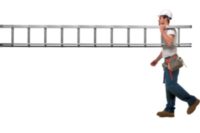 ISHN interviewed Kent McElhattan, chairman of Industrial Scientific, about Workers’ Memorial Day, which will be observed Sunday, April 28th.
ISHN interviewed Kent McElhattan, chairman of Industrial Scientific, about Workers’ Memorial Day, which will be observed Sunday, April 28th.
Q: When did you first become aware of Workers Memorial Day, Kent?
A: We’ve been aware of it for a long time. The only reason we haven’t been active until this year is because we have Worker’s Memorial Day every day inside Industrial Scientific. We show our people pictures and videos, we describe accidents, post OSHA’s weekly fatalities report, and communicate any way we can to get our people to internalize the shock and pain of losing a loved one suddenly at work. Nobody kisses their worker goodbye in the morning thinking they’ll never see them alive again. Their pain and suffering never goes away and it’s endured in silence, almost always. It can be as intense 30 years later as it was the first day. Suppliers have a sacred responsibility to protect the lives of workers with the very best products and services we can provide today. Our customers deserve it and we need each of our people to be emotionally, as well as intellectually, committed to their work. Continuously honoring fallen workers is the best way I know to overcome complacency and keep us inspired every day.
| "Canada deserves our admiration and compliments for leadership in workplace safety" |
Q: Does it surprise you that Workers’ Memorial Day was founded in Canada in 1984, and adopted in the U.S. in 1989? This seems like another example of the U.S. following safety-conscious and active foreign countries, as with the U.S.’s late adoption of the Global Harmonization Standard for chemical management.
A: I think in every way Canada deserves our admiration and compliments for leadership in workplace safety. No, I’m not surprised Worker’s Memorial Day was founded there. On the other hand, I’m pleasantly surprised it only took 5 years to be adopted in the U.S. We have so many different constituencies in the U.S. and things…even good things that everyone agrees on…usually take longer than they should.
Q: Workers’ Memorial Day events are held throughout the world. Some examples include active campaigning, and workplace awareness events. Are you personally and/or your company participating in such events this April 28?
A: This is a special year for us because we’re getting ready to break ground this summer on a new headquarters and manufacturing campus in Pittsburgh. On Sunday, April 28th we’re planning a dedication service to bring our people together and set aside the land and the buildings we’ll put on it to the purpose of preserving human life at work. We’re hoping for a large turnout of employees and families as we honor workers killed and re-commit ourselves to Our Vision, which states, “Industrial Scientific people are dedicating their careers to eliminating death on the job, in this century.”
Q: Do you have plans to raise awareness of Workers’ Memorial Day within your workplaces?
A: Our employees in 22 countries will participate virtually in the new headquarters dedication service on April 28. Our marketing and communications people are working to raise employee awareness of internal activities as well as external opportunities in their local communities. We’ll support and encourage any plans that raise awareness of Workers’ Memorial Day.
Q: Public events include speeches, multi-faith religious services, laying wreaths, planting trees, unveiling monuments, balloon releases, raising public awareness of issues and laying out empty shoes to symbolize those who have died at work. Will you be involved in any public events? If so, is what way?
A: …nothing to add beyond our internal dedication service.
According to the International Labor Organization (ILO), across the world:
- Each year, more than two million women and men die as a result of work-related accidents and diseases
- Workers suffer approximately 270 million accidents each year, and fall victim to some 160 million incidents of related illnesses
- Hazardous substances kill 440,000 workers annually and asbestos claims 100,000 lives
- One worker dies every 15 seconds worldwide. 6,000 workers die every day. More people die at work than those fighting wars.
Q: These numbers are dreadful. Why do you think this terrible toll does not get more coverage in the media and why does it not cause outrage among politicians and the public?
A: Lots of reasons…first of all, very few people are aware of these numbers, including safety professionals. Thank you for publishing them and increasing awareness. It’s unbelievable, two million people is the population of Houston! Secondly, although we occasionally have a tragedy that kills dozens, most often it’s one or two people at a time in multiple locations around the globe every day. If it’s dozens in one event then the media will report it on the front page for a day or two. If it’s one or two people here and there then it’s not going to make the front page except in small to mid-size communities. Thirdly, I think there’s a general sense in the U.S. that we’ve already solved this problem. People are surprised to hear these numbers. Granted, we’ve made good progress in the U.S. from approximately 50,000 deaths in 1913 to an estimated 4,600 in 2013, but it’s definitely not solved. Charts and graphs don’t mean anything if it’s your loved one that gets killed.
As for politicians, laws have been an important contributor to the success we’ve seen over the past century. Today we’re in a time that’s not receptive to new laws, even ones to protect workers. Thus we need employers to step up and, through my involvement with the National Safety Council, I’m seeing more and more that they are. There are increasing numbers of CEO’s leading with safety. NSC loves to honor “CEO’s Who Get It”…we have 8 or 10 every year. It takes a lot of courage for a Fortune 500 CEO to start a shareholder meeting by reporting safety statistics. Investment analysts just shake their heads. But the secret these CEO’s know is they can’t be best in safety until they’re best in every other function. You can’t be best in safety and have sloppy operations and processes. Safety is a great barometer to use in analyzing a company’s financial health because it cuts across every function, every department. You have to fix all your problems before you can be world class in safety.
I would also say that politicians react to pressure from their voting base so we need more people doing what you’re doing…educating the public and inciting outrage.
|
“Pray for the dead and fight like hell for the living.” -Mother Jones, 1910 |
Q: What is the real value of Workers’ Memorial Day to you, Kent? How does it tie into your own personal values, beliefs and perceptions?
A: I think there’s a lot of value in recommitting ourselves to safer workplaces. I also think there’s value for Workers’ Memorial Day to help surviving family members mourn their loss. These families are suffering a range of bewildering emotions. It’s comforting for them to know they’re not alone.
Every fatality is tragic but when young parents are killed it seems to evoke an emotional response of sadness, frustration and violation for me. We need to do everything we can to stop it.
President Obama in his 2012 Workers’ Memorial Day proclamation stated: “Yet, when millions of Americans suffer workplace-related injury or illness every year, and thousands lose their lives, we know we cannot give up the fight.”
Mother Jones in 1910 said something similar: “Pray for the dead and fight like hell for the living.”
Q: Why do you think an emphasis on protecting workers from injuries and fatalities is equated to a “fight”? Should not protection on the job be a “no-brainer”? Why is it framed as a “fight”?
A: I think we see it as a fight between safety versus productivity. We don’t understand that safety and productivity are the same thing, they are not mutually exclusive. We still think managers need to choose between making their workplaces high safety or high productivity. It’s similar to where quality and cost were 40 years ago. We used to think you can have high quality or you can have low cost…cars for example…but you can’t have both. Today we expect high quality at low cost, and successful businesses have figured out how to deliver both. The same thing will happen with safety. High productivity results from excellent processes including safety.
| "CEOs who set the well-being of their employees as top priority are rare…but their employees would run through walls for them" |
Q: Any other thoughts, comments or reflections, Kent?
A: Two things: First I would emphasize that the most effective people to change our workplaces are our CEOs. They set the priorities within their company. CEOs who talk to their people about nothing but profits, productivity and financial statistics are typical and deliver average safety performance. By contrast, CEOs who set the well-being of their employees as top priority are rare…but their employees would run through walls for them. Safety is a subset of well-being, as is paying them well, treating them with dignity and respect, giving them honorable work, etc.
Secondly, I would encourage universities and entrepreneurs to develop innovative and intrinsically safer ways to work. I see more entrepreneurial opportunities in workplace safety than anywhere else. The fields of robotics, material sciences, and automation, just to name a few, will obsolete many of the most dangerous activities being performed by people today. And entrepreneurs who deliver breakthroughs will make a lot of money. I feel certain that death on the job will be eliminated by the end of the century. We will look barbaric and people will be repulsed at the way we do things, the same as we are repulsed by 10 year olds working in coal mines 100 years ago.




